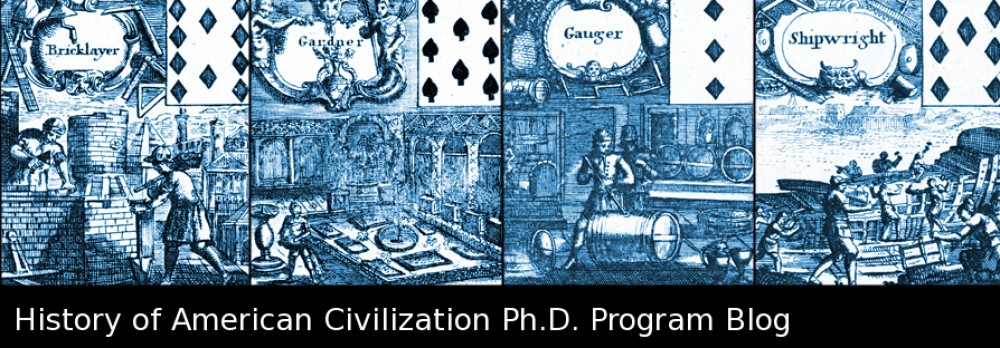One of the first questions I am inevitably asked when someone discovers I study material culture is not where (what geographical region?) or when (what time period?), but why (what for?). Why do you study objects? Why do you study objects when there are so many written historical sources left untouched in archives? Why do you study mute objects when you could be retrieving human voices? Why do objects—and, by extension, material culture studies—matter?
I have been asked these questions so many times that I have prepared a stable of answers that I may trot out whenever confronted by a skeptical inquisitor. First, I explain that I don’t study objects to the exclusion of other source materials, such as account books, letters, newspaper advertisements, and diaries. Then I argue that objects are far from mute—scholars just need to learn their language. Objects reflect human relationships that may be absent from—or even erased by—written sources. Like books, objects embody the distinctive worldviews of their creators and original users, but are also open to new interpretations by contemporary audiences. Furthermore, they may reveal the experiences of people excluded from the traditional archive, either because of illiteracy or systematic suppression and oppression. Finally, I assert that objects are repositories of both individual and collective memories, essential to understanding where we have been and where we are going as a society. At this point, my questioner is usually satisfied with my response or tired of arguing with me. In either case, I view it as another small victory in the campaign to make material culture a respectable discipline.
However, my experiences in recent months have made me realize that I am neglecting the most important argument in my arsenal. As co-chair of this year’s Material Culture Symposium for Emerging Scholars, I am once again reminded of the power of material culture studies to inspire interdisciplinary collaboration. This year’s symposium, entitled “Embodied Objects: Material Culture Studies in Three Dimensions,” has drawn speakers from a variety of disciplines, including history, visual studies, English, art history, design, and American studies. On Saturday, April 20th at the Winterthur Museum, these speakers will engage with an audience of academic faculty, museum professionals, students, and a broad, interested public. And they will engage with one another.
Ten years ago, the first Emerging Scholars Symposium was born when a group of University of Delaware students expanded their conversation about people and objects to include other academics, museum professionals, and members of the local community. In addition to creating a friendly space for young scholars to share their work, the Emerging Scholars relayed a positive message to other students of material culture: you are not alone.
Material culture scholars got the message. This year, we received an overwhelming response to our call for papers, which asked submitters to consider the relationship between people and their things, paying special attention to how objects act as extensions of ourselves, help to stabilize identity, and give permanence to human relationships. The symposium will feature eleven presenters grouped into three panels, which will broadly explore race and cultural memory, public spaces and commemoration, and gender and the exchange of gendered knowledge. In many cases, these emerging scholars demonstrate how objects provide evidence of human relationships where few other source materials exist. They demonstrate how people create, adapt, and even destroy objects to fit their changing social needs. Perhaps most importantly, they highlight how often people construct cultural dialogues around the objects that pervade their lives.
The organization of the conference is also an exercise in interdisciplinary collaboration. Without the help of graduate students and faculty in the departments of history, art history, English, and sociology, as well as the Center for Historic Architecture and Design, the Museum Studies Program, the Winterthur Program in American Material Culture, and the Center for Material Culture Studies, none of this would be possible. In particular, I’d like to acknowledge the tremendous efforts of my co-chair Amy Torbert, a graduate student in art history, and our faculty adviser Deborah Andrews, professor of English and Director of the Center for Material Culture Studies. Despite our varied backgrounds, we have made our shared vision a reality.
We hope you will join us for this year’s Material Culture Symposium for Emerging Scholars so that we may continue to expand the discussion of material culture, answer difficult questions, and forge new relationships across disciplines. For more information on our program and registration, please visit http://www.udel.edu/materialculture/ess_program.html.
About the Author: Liz Jones is a third-year doctoral student in the History of American Civilization Program at the University of Delaware. She is currently researching women’s consumption habits in the late eighteenth and early nineteenth centuries. You can follow her on Twitter @LizJonesAll1Wrd.


